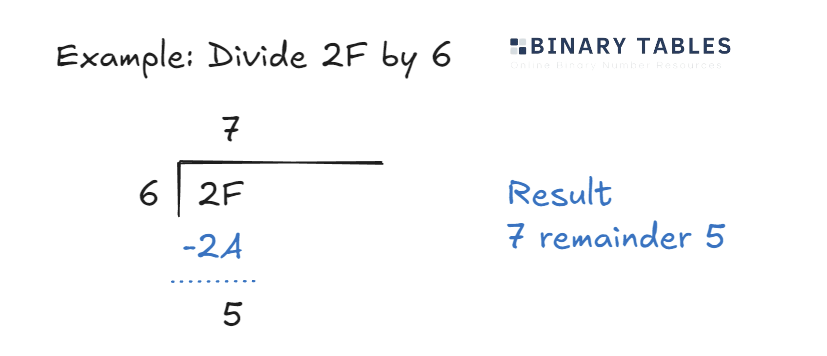Hex Division is the process of dividing hexadecimal numbers. Like binary division, hex division takes place with a numerator and denominator. While the process is similar to decimal division you likely learned in your initial schooling, it is more complicated as hexadecimal is a base-16 number system. This means that there are 16 symbols in the hexadecimal with the digits 0-9 and letters A,B,C,D,E and F. Because of these extra digits it is more complicated to keep track of everything when dividing in hexadecimal.
Hexadecimal division is easy once you understand the steps required to complete it.
Below is an example of the steps involved in dividing the hex division example of 2F divided by 6, or 47 divided by 6 in decimal.

Use our simple hex division table to learn the results of simple hex divisions.
| Dividend | Divisor | Quotient | Remainder |
|---|---|---|---|
| 2F | 6 | 7 | 5 |
| 4A | 3 | 15 | 1 |
| 7E | 5 | 19 | 3 |
| A1 | 8 | 14 | 1 |
| FF | 10 | F | F |
| 1A3 | 7 | 31 | 6 |
| 3C | 4 | F | 0 |
| B2 | 9 | C | 1 |
| 3D | 2 | 1F | 1 |
| 7F | 7 | 15 | 4 |
To use the hex division calculator first put the number you wish to divide in the top box in hex. In the bottom box place the number you wish to divide by it in hexadecimal. Press the calculate button. The result including the quotient and remainder will be found below the calculate button in both decimal and hexadecimal. Use the reset button to clear the calculator in the top right.
Yes, the free binarytables.com hex division calculator includes both the quotient and remainder in the result.